Traditional Anguilla food is reason only to make a trip to this beautiful island
Many people make the mistake of thinking all Caribbean food is the same.
And while Anguilla food may have some similar dishes to other countries in the region it has its own unique spin due to its location and history.
Where is Anguilla?
This little island of 15,000 people is a short 20 minute ferry from St.Martin. It lies in the Leeward Islands group in the Caribbean.
History TL;DR: It was originally settled by the Arawaks, then Europeans (mostly the British and French) fought over it for years, the British established plantations and brought African slaves.
Then the British realized that the tiny island had beautiful beaches but the land was limestone and therefore horrible for plantations.
They left without a fight and Anguillans reclaimed their land. Today Anguilla is a British overseas territory.
All this to say that Anguilla has a history that isn’t exactly the same as the other islands.
Different people + different history = different food.
At only 26 miles in length and a few miles wide, this isn’t a huge island.
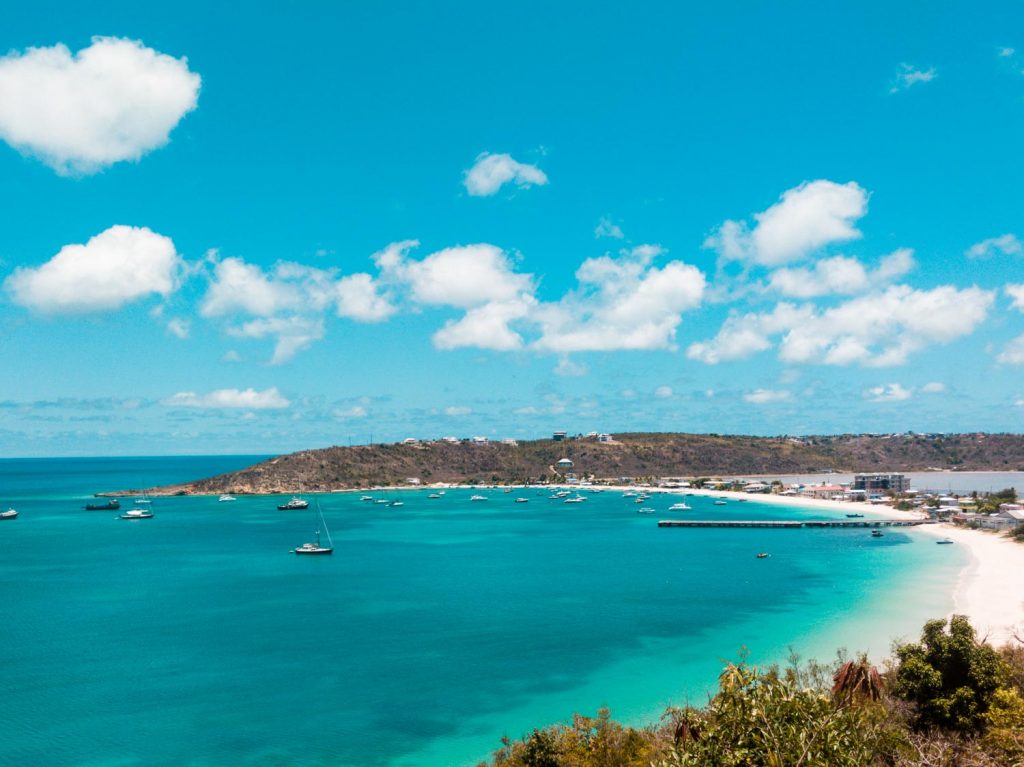
But it does enjoy many of the beaches that have been awarded the highest accolades in the Caribbean and delicious seafood to go along with it.
Food always seems to taste better as you unwind on a fantastic beach!
Anguilla has also developed the reputation as being the ‘Culinary Capital of the Caribbean’ – but don’t spill the news to Barbados because they told me the same thing.
Bajan Food
Barbados and Anguilla are both in the Caribbean and while they are some similarities they are many differences with Anguilla food – enough to have a reason to visit both islands.
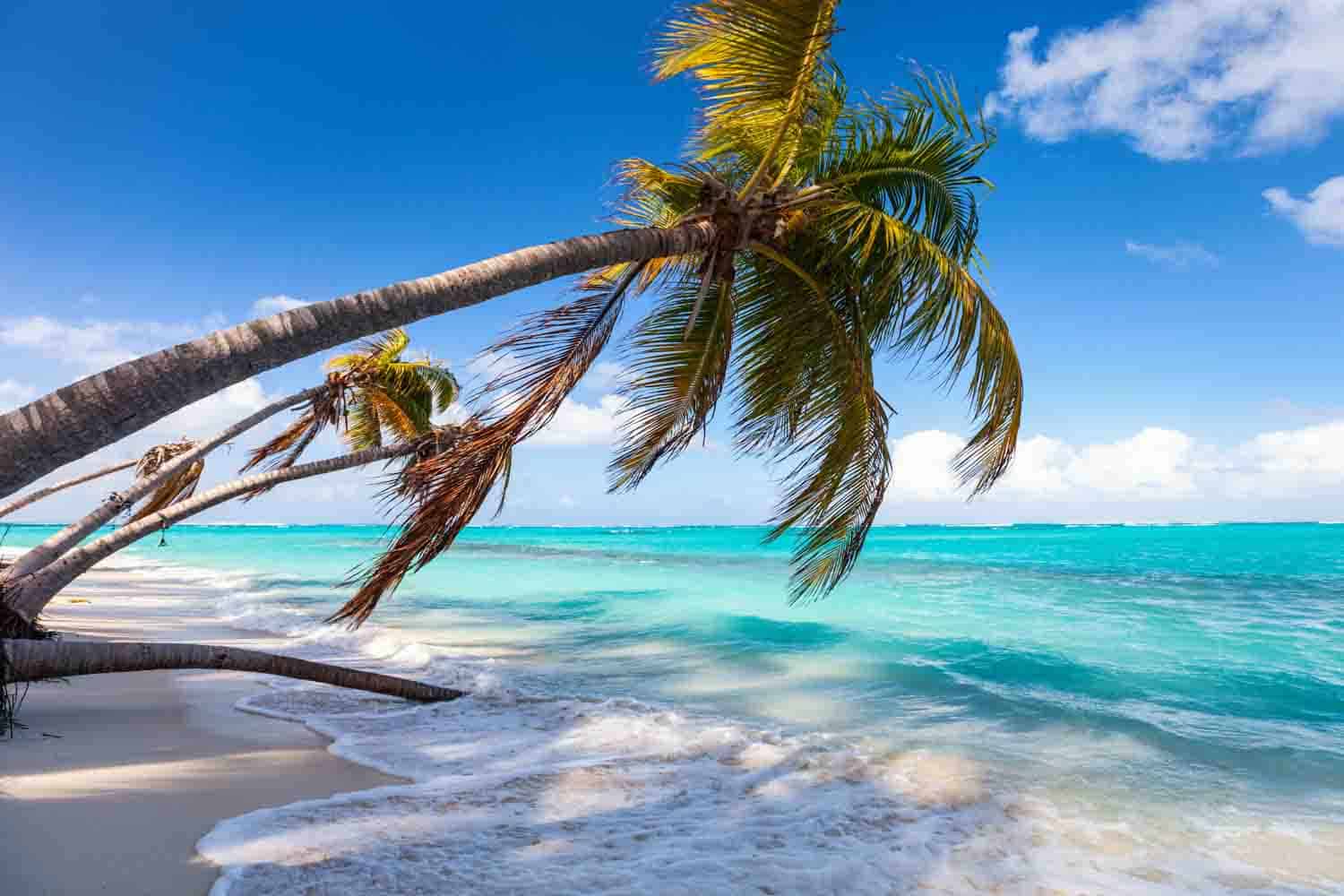
Influences on Anguilla Food
The more time I’ve spent in the Caribbean the more I see common or similar foods from island to island.
This is true especially with Jamaican food and also food in some Central American countries.
But there’s no doubt Anguilla food is different.
One of the more impactful influences is that there is very little farming or animal rearing on the island.
Anguilla’s Struggle to Serve Local Food
There are smaller animals like goat and sheep but most meat needs to be imported.
This means fish and seafood are more prominent than other Caribbean island which have access to cattle and pork.
The common ingredients grown in Anguilla including pigeon peas, citrus fruits, tomatoes and garlic, which all take a prominent role in the cuisine of the island.
Anguilla island also has an issue with clean, fresh water. It is the most expensive commodity for farmers.
Although single-use plastics have been banned, the one exception is water bottles because it’s the only option for many people, including travelers.
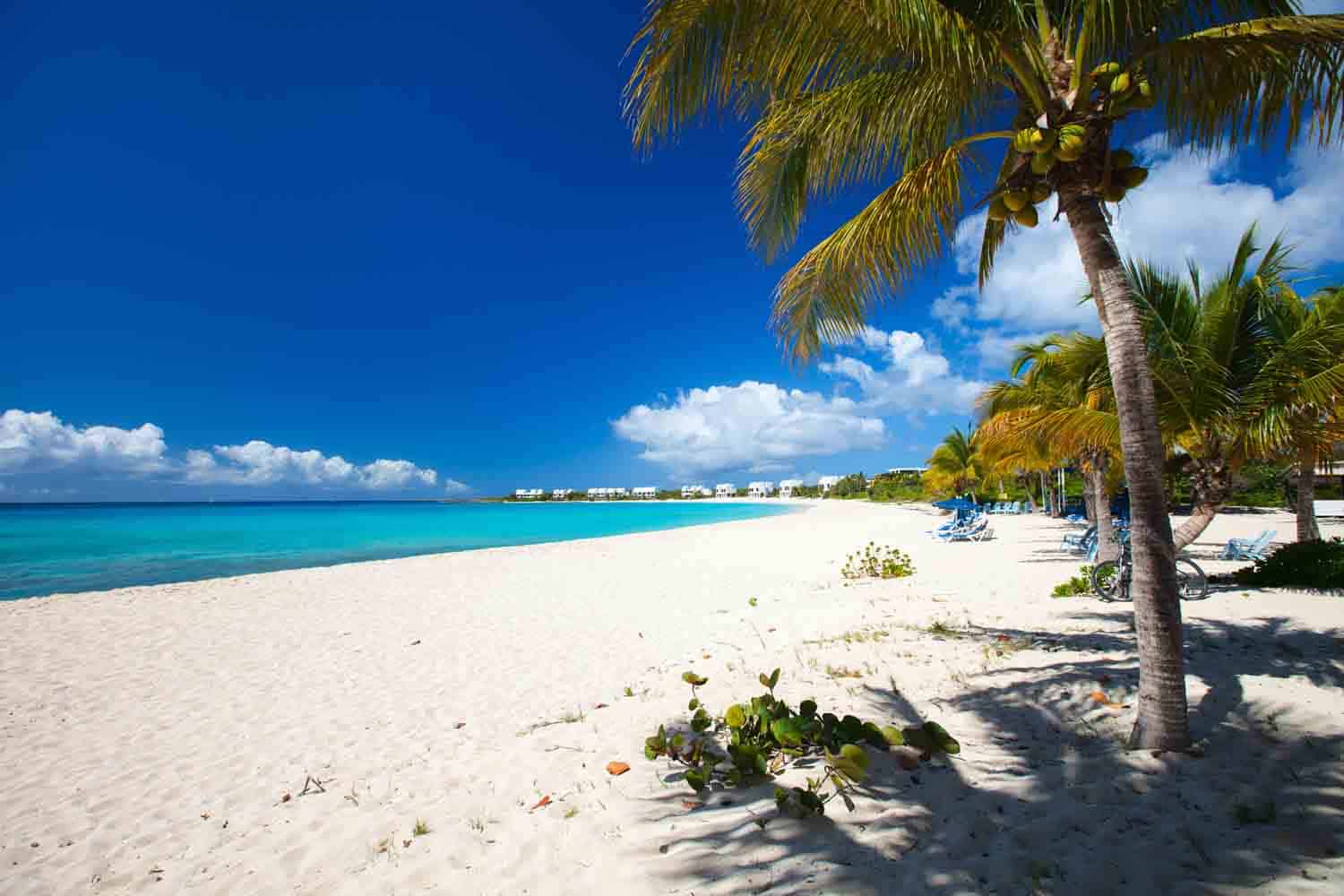
Can You Drink the Water in Anguilla?
Short answer yes. You can drink it. But you may not want to. Anguillans don’t. At least not directly from the tap.
Anguilla hotels may have different water sources.
Some use water-makers to create clean water, with others having cisterns where there may be a possibility for the build up of bacteria.
To keep things simple most restaurants offer bottled water, in fact many luxury hotel guests expect it.
Best Things to Do on Anguilla Island
But as a frequent traveler I have really struggled with how many water bottles I go through.
After spending so much time in Cuba and wanting to avoid single use plastic I invested in this Lifestraw water bottle.
Anguilla has a dry heat and it’s easy to become dehydrated. So whatever you choose, make sure you drink a lot of water during the day.
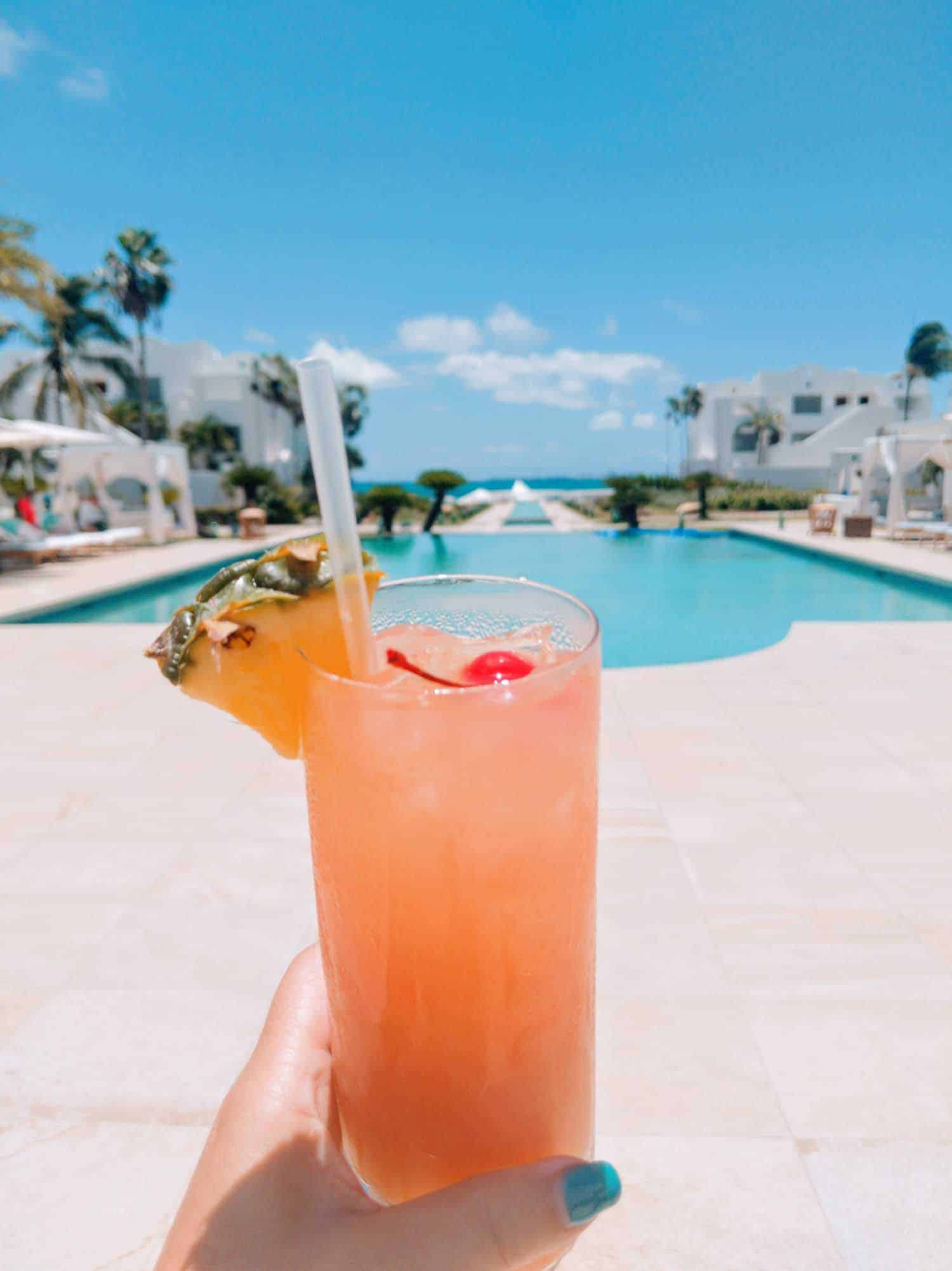
Popular Drinks in Anguilla
As you would expect from an island that has been so influenced by international cuisine, there are no shortage of drinks options on the island.
Many restaurants will have extensive wine lists that have been imported from around the world.
Here are a few of the drinks that are local to Anguilla and the Caribbean that are worth trying:
Rum Punch
Like most of the Caribbean, Anguilla is an island that was occupied for the cultivation of sugar by the European explorers.
Naturally, where sugarcane is found, there is also the distilling of rum not far away.
Sadly, Anguilla doesn’t have any local distilleries – that pesky water issue. But it doesn’t mean there isn’t lots of rum in Anguilla.
Every restaurant and cafe on the island has its own recipe. Even Calypso Charters, which takes you from St.Maarten to Anguilla is known to have a great rum punch.
The complexity of the recipes can vary, with some just using lime juice, while others add guava, grenadine, pineapple or orange as well.
However, a great rum cocktail cocktail also includes sugar syrup and bitters.
Presentation can range from a simple drink in a glass to elaborate fruit garnishes.
Sea Moss Drink
You can find the sea moss drink across the Caribbean. If you’re familiar with your thickening agents, the seaweed used is actually agar.
The taste is supposed to be similar an egg nog or Cuban crema de vie, as the sea moss is soaked overnight then boiled until thickening like a jelly.
At that point milk, nutmeg, cinnamon, vanilla and sugar are added.
In the video above I tried a supermarket brand of the sea moss drink, that was also thickened with xantham gum. I was not a fan of the viscous texture that was similar to snot.
I’ve heard that homemade sea moss drinks are better but if not blended thoroughly they can have a grainy texture.
AXA Ale
The majority of beers to be found in Anguilla have to be imported from other islands, but AXA is the first beer local to the island.
You would have thought one of the easiest things to find to drink in Anguilla is the local beer.
But I learned that AXA isn’t quite so local.
The island has a shortage of water so mass production of beer would be cost prohibitive as water costs so much.
Instead it is made in the United States and then shipped to Anguilla. It launched in 2018 and it is locally owned.
This light ale is generally served cold to give it the refreshing edge – especially if you’re not drinking enough water.
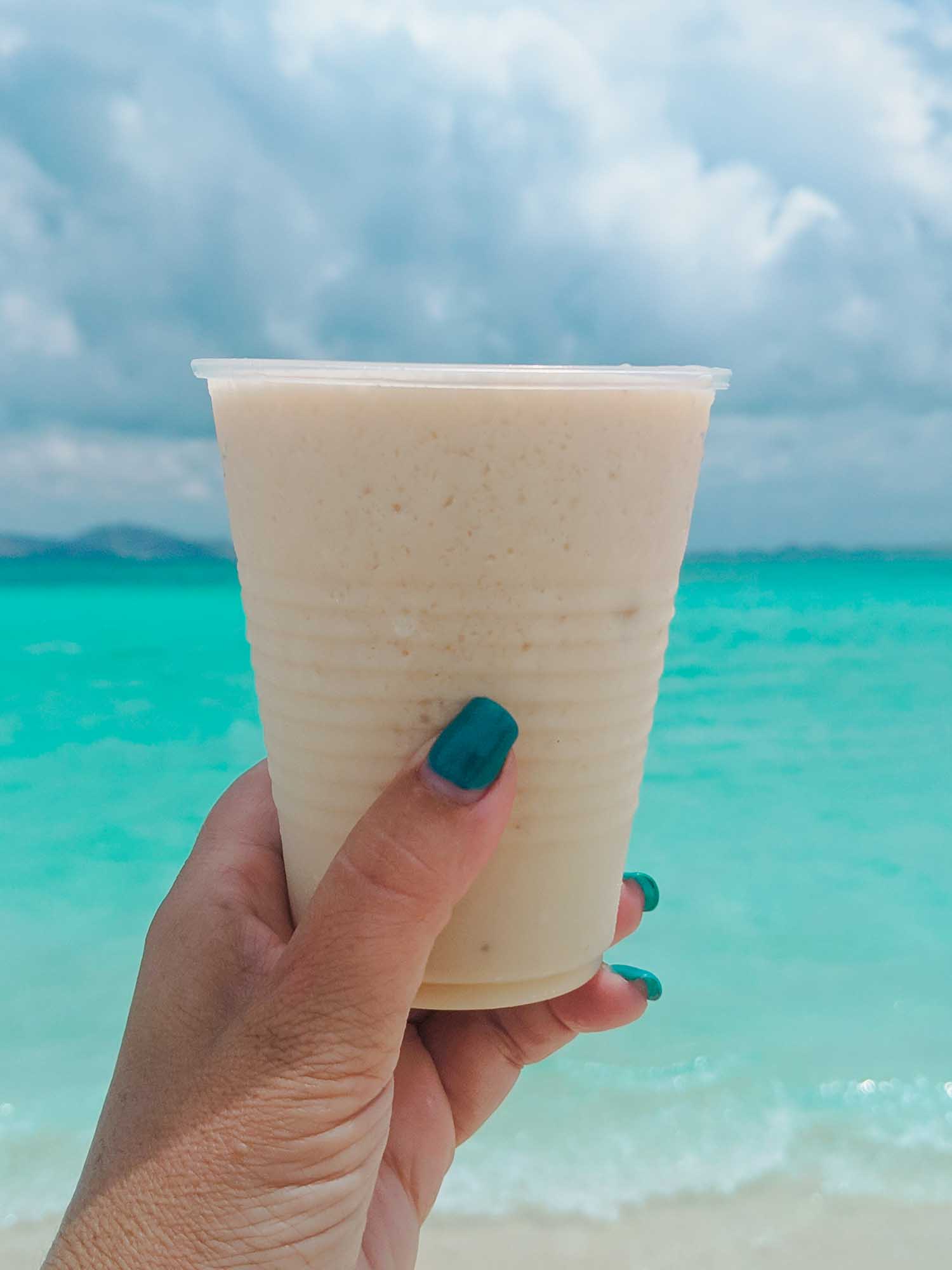
BBC Cocktail
The unofficial cocktail of Anguilla? I had been searching for this frozen drink since we landed and I found it at the Sunshine Shack at Rendezvous Bay.
A creamy cocktail that offers a nice taste to cool down in the tropical heat, the BB&C is made from three simple ingredients. Baileys, banana and coconut.
The drink can vary a little, with some adding rum, and some of the smoother options replacing banana with a banana liqueur.
However, the key aspect for the mix is that the drink is served very cold, to ensure it gives the best cooling punch to the Anguilla weather.
Garnishes can vary as well, with some served with a little coconut or even a slice or two of banana floating on top.
Mauby
One of the non-alcoholic options that is commonly found in Anguilla, but still retaining a Caribbean flavour is mauby.
This is a typical local beverage that originated with a local recipe. It was adapted by soda companies into a carbonated soft drink.
Mauby is made with the bark and leaves of the mauby tree, and was traditionally fermented.
To be fair the video above was of Mauby in Barbados. My last day I chatted with Jamal Hodge, a mixologist at CuisinArt Golt Resort and Spa.
He shared that every mauby is different so I needed to try it again. However, he did admit it’s an acquired taste.
In Anguilla it is more commonly found as a soda. Mauby Fizz is in many places across the island.
The taste is said to be quite similar to root beer, but with a slightly bitter aftertaste.
For the authentic taste, look out for the fermented traditional mauby.
Carib Beer
One thing I love about Caribbean beer is that it is light and tasty. Carib is brewed in Trinidad and Tobago.
It is a little stronger than Red Stripe and more popular in Anguilla.
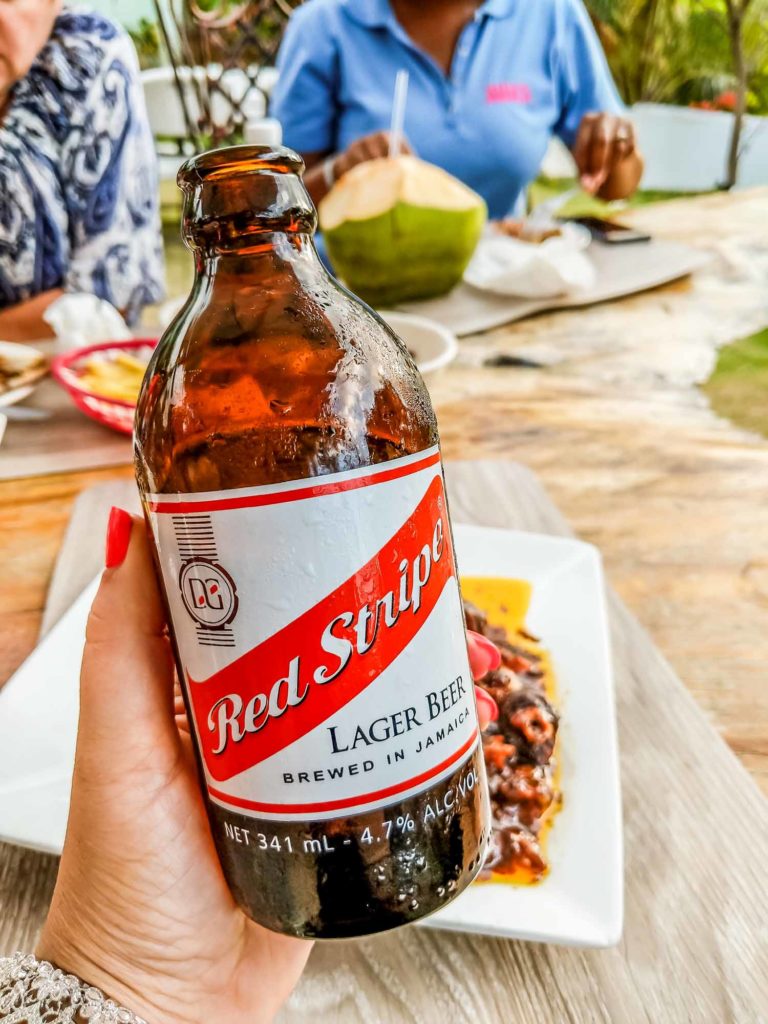
Red Stripe Beer
Probably one of the most famous drinks in Jamaica, Red Stripe beer is one of the varieties that you will find across the island.
Red Stripe is a smooth lager with a light amber colour and is easy on the palate.
It is generally sold in bottles on the island, with the glass tending to retain the cold for a little longer than the canned beer.

Ting
A carbonated grapefruit soda from Jamaica, you can find Ting all over the Caribbean.
It’s a great non-alcoholic option that is tart and sweet.
You can find the original Ting all over the island but special flavours like Pink Ting are a bit more difficult to find.
Anguilla’s National Dish – Pigeon Peas and Rice
Like many parts of the Caribbean, the indigenous cuisine of the islands has evolved over the years.
While pigeon peas have been grown on these islands before the arrival of European settlers, they brought rice with them to the islands.
These two ingredients are combined to make the national dish of Anguilla.
Pigeon peas and rice can be cooked with meat which can then be used as a meal by itself, or it can be a side dish.
Caribbean Rice and Beans
While in Anguilla I attended a new food festival called Extraordinary Eats, which culminated in a 5-course tasting menu dinner featuring local chefs that cook on the island as well as in other countries.
One local was overheard saying “They did such an amazing job tonight, now where’s my peas and rice?”
This is not an Anguilla food to overlook.
Most families will have their own preferences for how the dish is seasoned, with various ingredients included.
These can be lime juice, thyme, salt and pepper and garlic, while some prefer to add a little heat with a dash of hot pepper sauce.
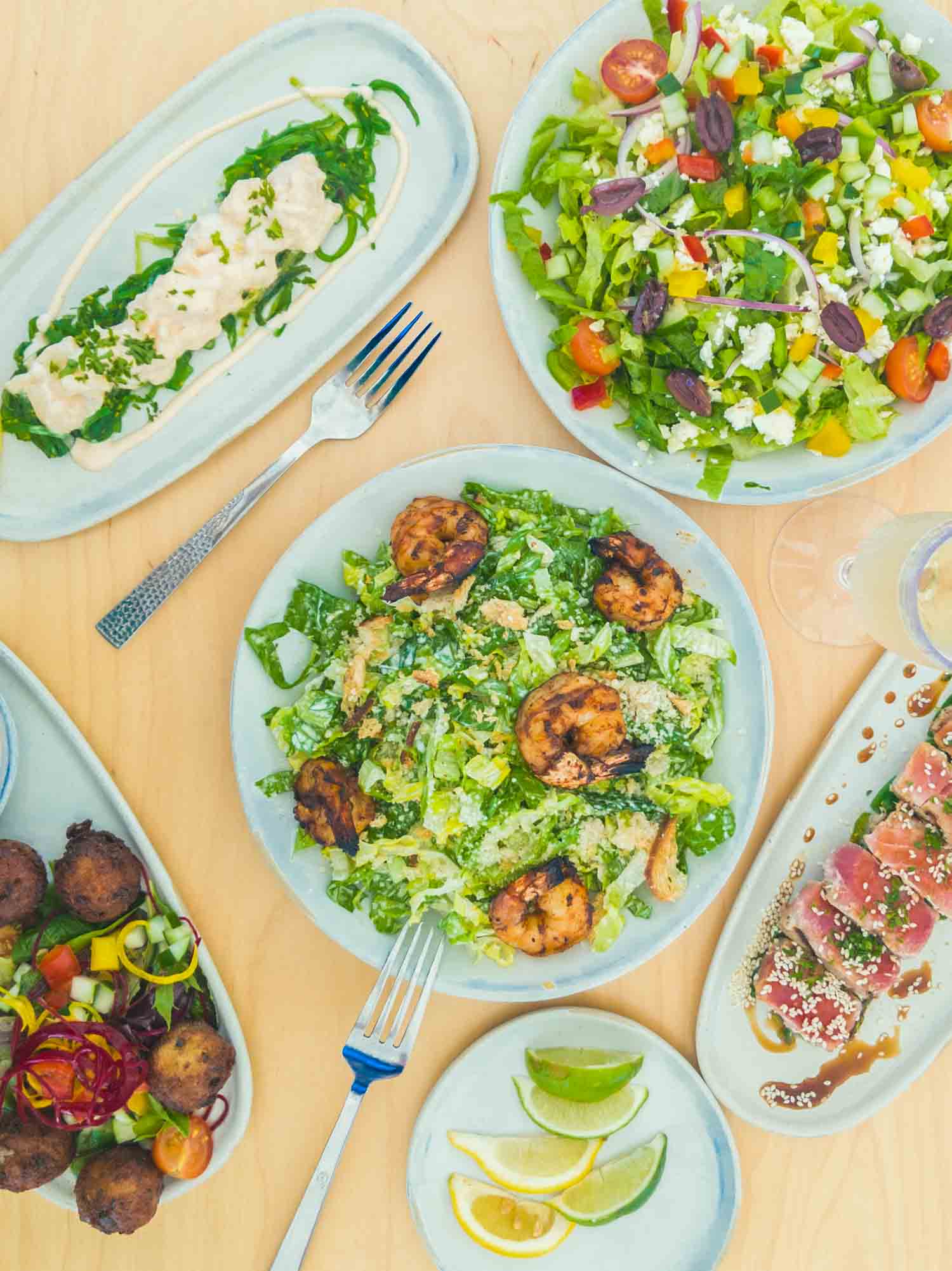
Savoury Food in Anguilla
Seafood plays a very important role in Anguilla.
It is more common to eat fish at home than meat, which is great because it’s healthy and easy to prepare roasted in foil.
It is very common to find local red snapper and mahi mahi on menus.
Local spots may have jackfish, which is similar to Canadian smelts, hind, barracuda, tuna, and lionfish is starting to make its way to menus.
This is fantastic news because lionfish is an invasive fish that are threatening the survival of local fish.
Is Anguilla Food Spicy?
On tables in other countries in the Caribbean you will always find hot sauce.
The same is not true in Anguilla, we can probably blame the British for that.
But there’s usually a bottle around as Anguillans like a bit of hot sauce with fried fish.

Callaloo
One of the most common dishes on the island, callaloo is not only the name of this dish but is also the leafy vegetable that is the main ingredient.
Originating from West Africa, I first had callaloo in Jamaica and it’s often referred to as Caribbean spinach.
Traditional Jamaican Food
Callaloo is also a warming leafy soup that is a great source of iron because of the greens in the dish.
The callaloo leaves are chopped and gently fried with onion, garlic and herbs, before okra and pumpkin chunks are added.
Some restaurants also add some crab meat and a small amount of salted pork.
This is then simmered with some hot red pepper to give the finished soup an extra kick of heat.
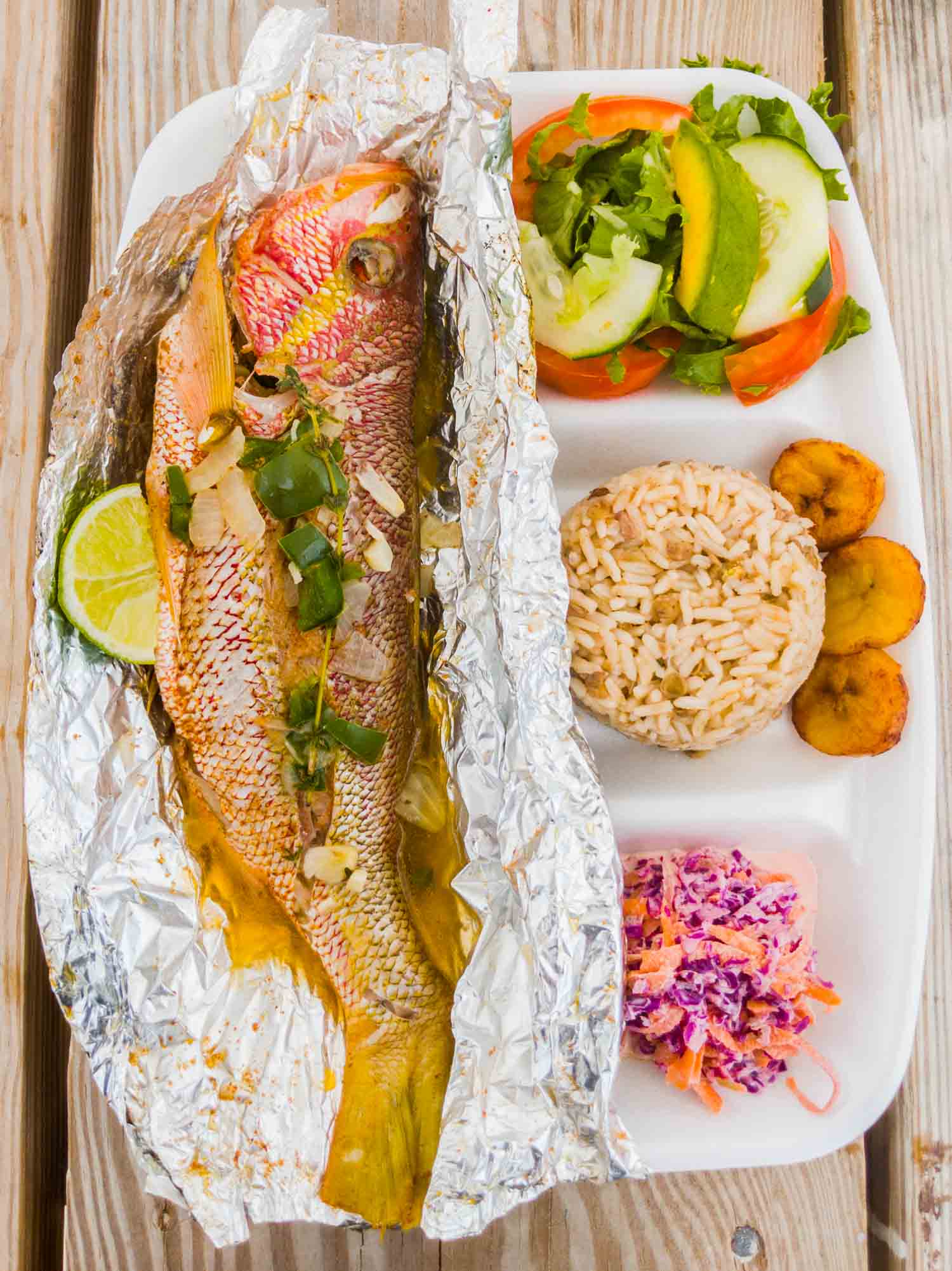
Red Snapper
Seafood is a huge part of the cuisine in Anguilla, and red snapper is one of the common fish found around Anguilla.
You can find it in a range of different seafood dishes, but at its best it is simply prepared on the grill packed in foil.
Roast Corn
Everyone loves corn on the cob, right? Well not like Anguillans LOVE roast corn.
Corn isn’t readily available on the island, but when it’s there the news spreads like wildfire. Roasting the corn makes it sweeter than a traditional corn boil.
And unlike in Mexico or Central America, no one puts mayonnaise or cheese on it – plain corn is good enough!
Saltfish
As the name suggests, saltfish is generally a white fish such as cod or mahi mahi that has been dried and salted to help preserve the fish.
This can be purchased in bags from grocery stores around the island. The fish does not have bones so it be used for soups and other dishes right away.
It is used as an ingredient in many dishes, and one common is saltfish.
Unlike in Jamaica the saltfish is not combined with ackee, but instead onions, peppers tomatoes and garlic and fried, while many restaurants will add a little hot pepper to the dish too.
Saltfish is very common during Easter and you can usually find it at local restaurants on weekends.

Conch Fritters
Do not miss this Anguilla food, it is fried and super tasty.
Often found in the beach hut restaurants along with some of the more upmarket options on the island, conch fritters make good use of the local shellfish.
The conch is not just for producing attractive shells, but can be tasty too.
Here the meat is chopped and combined with a little white fish such as mahi mahi.
This is then mixed with onions, green and red peppers, cilantro and eggs, before being blended to make a ball or a conch shape.
This is covered in breadcrumbs before being fried.
The fritters are often served with salad and one or more dipping sauces, or as a side dish.
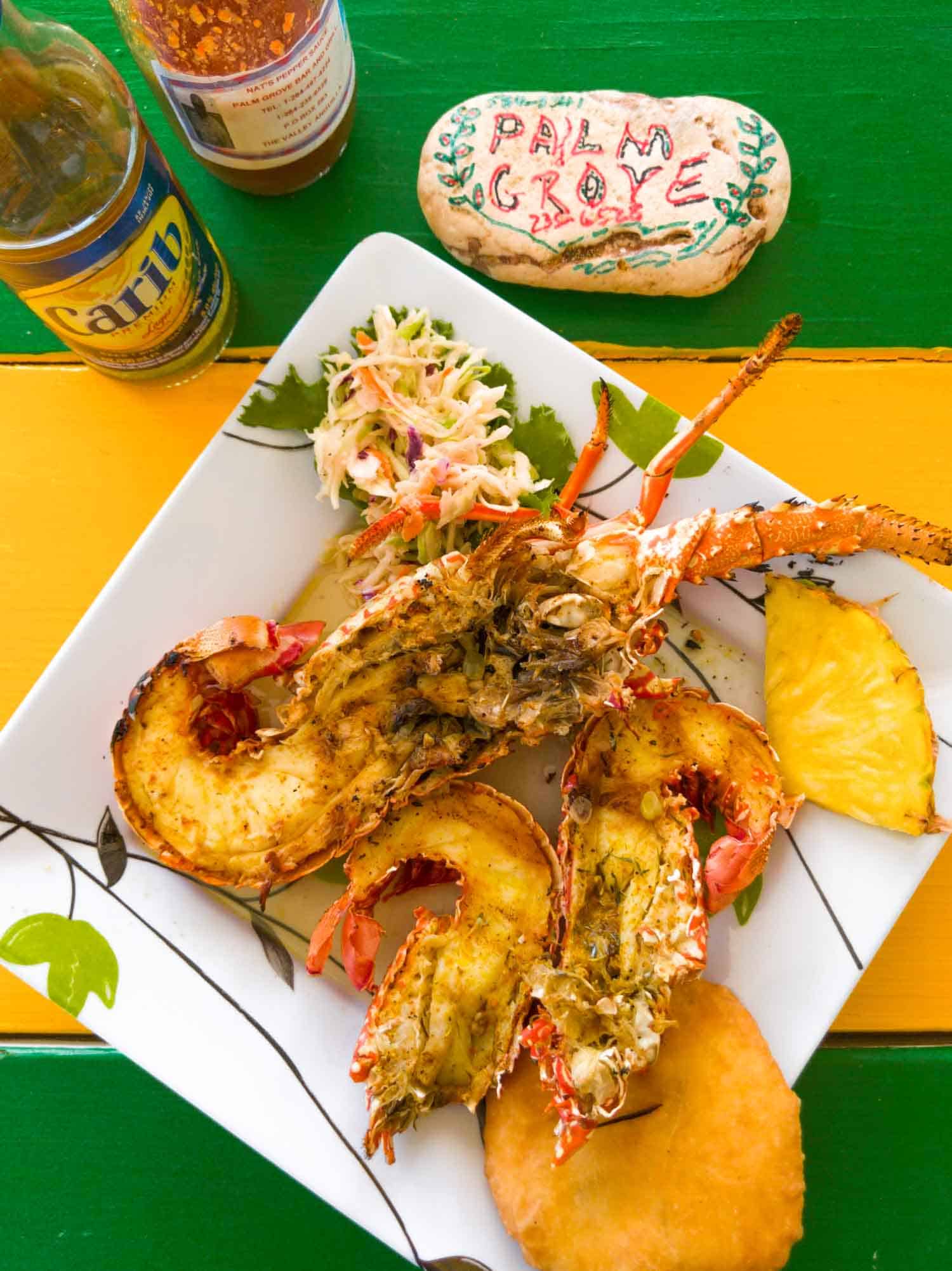
Grilled Spiny Lobster
I grew up eating cold water, Atlantic lobster so I’ve always turned my nose up at Caribbean rock lobster.
I thought the flavour wasn’t as intense and there are no claws!
But Anguillan lobster is well known and they cook it exactly how I like it – simple!
The good news is that unlike some Caribbean countries, lobster is available in Anguilla all year round.
It’s usually grilled with either garlic or a lemon butter and maybe a few spices.
That’s all lobster really needs.
Crayfish
Pronounced cray-fish not craw-fish in Anguilla, this was one of my favourite things to eat.
Its flavour is similar to lobster but is more tender and the flavour is a bit sweeter.
There is definitely more demand than supply. It’s not on every menu on Anguilla so if you spot it, order it.
Barbecue and Jerk Chicken
Barbecue is where it’s at in Anguilla. If you want to get off the each you need to hit Ken’s BBQ on the Strip in the Valley.
It’s open for lunch and dinner but Friday night it is booming with locals. Prices are VERY reasonable and portion sizes are large.
People told me the johnny cakes weren’t the greatest so don’t pay extra for them.
You can also get jerk chicken on Anguilla as one of the spicier options to eat. True Jamaica style is served all over the island.
Stewed Goat
Because Anguilla island is so small, goats are one of the most common animals raised for consumption.
Some families will keep a few goats for special occasions, while you will also sometimes see them wandering around the island.
The most common method of preparing goat is as a stew, which often accompanies pigeon peas and rice.
The recipes for stewing goat will vary, as it can be prepared with a range of different vegetables.
Johnny Cakes
Johnny cakes are one of the staple foods of the island that you will find served in almost every restaurant on Anguilla.
It is essentially a type of flat bread made with cornmeal.
The ingredients are simple but like anything made with dough, it’s all about technique and not overworking the ingredients.
This was one of the indigenous ingredients that have found their way into the cuisine of Anguilla.
The dough for these ‘cakes’ is very simple to prepare, with cornmeal, flour, oil and water combined to make the dough.
It must be gently seasoned with salt, sugar and a little baking powder, before it is kneaded into the smooth dough.
Dough is separated into small patties and fried for a couple of minutes on each side.
Ideally, the johnny cakes should have a light texture with a slightly crispy crust, and form the perfect side dish for almost any main meal.
Cornbread
For centuries the indigenous people of the island have used cornmeal to make bread, and it is still found across Anguilla today.
While johnny cakes are the most common side using cornmeal, cornbread is still an option.
It tends to have a denser consistency. The addition of eggs to the mix and a greater proportion of cornmeal help to give this the doughier texture of bread.
Cornbread is also cooked in an oven, rather than in the pan as johnny cakes.
At Blanchards Restaurant in Meads Bay they also add a little pineapple and cheese into the dough for a sweet twist.
Caribbean Fish Soup or Bisque
As we have already established, one of the most common ingredients in Anguilla is its seafood.
Every restaurant on the island, from beach shack to top end places will have their own variety of fish soup.
Some may just include conch or mahi mahi in the soup, while others will use a variety of seafood.
Many of the soups will be cooked in a chowder style with some milk or cream.
However, you may also find some that have a kick of heat with a little hot pepper, so check with the waiter if you aren’t too keen on spicy food.
Also look out for lobster bisque and variations of it.
I had lobster cappuccino, which had no coffee in it, it was just a cute play on lobster bisque using a coffee cup.
It was delicious and may be appearing on the new seasonal menu at Zemi Beach’s Stone Restaurant at Shoal Bay.
Dumplings
As in many cuisines, dumplings are added to many dishes to help add extra texture and flavour in Anguilla.
Found in fish and vegetable soups and stews across the island, the dumplings are made with a simple cornmeal dough.
This is made with a little flour, baking powder and sugar, with a little water to hold the dough together.
The dough is then kneaded before being worked into a cigar shape, and is then either steamed or boiled.
These are then added to the dishes, or can be served by themselves as a snack in some areas of Anguilla island.

Traditional Anguilla Desserts
So I will be the first person to say that I should not be judging any kind of desserts as good or bad.
But I do get offered them quite a bit even though I’d rather another cocktail to end my meal.
I like cheesecake, creme brulee and chocolate. I’ve found all people who dislike desserts like these three things.
But I continue to try desserts as I travel. One of the things I loved learning about Anguilla is that one of its supermarkets, JW Proctor, has a bakery where local people can make baked goods and they will sell it on their behalf.
This would never happen in Canada or the US because of stiff food and safety regulations.
But Anguilla is small and so if someone is making bad cookies, everyone knows.
Sometimes you gotta lighten up and let people have a side hustle making coconut drops.
Tamarind Balls
Like many desserts in the Caribbean, tamarind balls are believed to have originated in Jamaica, where much of the Caribbean’s tamarind fruits are grown.
Tamarind trees are native to Africa, but have certainly flourished in Anguilla as well.
The fruits themselves are used for the edible pulp, which becomes sweet as it ripens.
Jamaican Snacks
These desserts are very simple, and essentially combine the tamarind pulp with sugar to knead it into a dough.
They are then made into balls and rolled in sugar before being placed in the refrigerator to set.
These things are sweet, but handy to have in your purse if you get hangry like I do.
Some recipes may add a little rum or flour as well, and these balls are often served in a bowl as a shared dessert.
Sugar Cakes
They may look like coconut macaroons, but sugar cakes are all kinds of sweet.
The base recipe is made with unsweetened coconut, ginger, lots of sugar and water. These ones had lots of ginger and the coconut was just for texture.
They reminded me of the grater cakes in Jamaica.
Coconut Drops
I previously tried coconut drops in Jamaica, but they were MUCH smaller.
This was like a dense cake cookie with lots of fresh ginger.
It was extremely filling. If you are really hungry and need something to eat right away this will do it.
Otherwise I would split one of these into four servings.

Anguilla Food Souvenirs
Banana Rum
I was confused when I first saw this at the Zemi Beach gift shop – which you should pop into if you’re staying there as the owner curates the entire store with cute things.
Can you make rum from bananas?
No it’s just rum flavoured with banana but it’s worth trying as it tastes like bananas foster.
Cuisinart Resort also makes a number of flavoured rum that you can buy, just tell Jamal I sent you!
Anguilla Sea Salt
Sea salt production has been going on for years. Anguilla sea salt is so well known that I discovered my own province, Nova Scotia, was importing it from Anguilla centuries ago.
I’m assuming it was for making salt cod – but as a presqu’ile and almost completely surrounded by salty water. We could have harvested our own.
Hot Sauce
Caribbean hot sauce is world famous, but this isn’t quite the island for it. Due to its British heritage, the food in Anguilla isn’t so hot.
Don’t expect to have hot sauce on your table with other condiments.
But there are a few local brands and it is popular to have hot sauce with local fried fish.
If you’re a fan you can pick up local hot sauce at the supermarkets or in hotel gift shops.
Pin It For Later: Anguilla Cuisine
Disclosure: I was a guest of the Anguilla Tourist Board who invited me to attend the Extraordinary Eats festival. They did not request I write anything about Anguilla food, or come to the Caribbean island so well researched that I had a list of what I wanted to eat at the Anguilla restaurants.


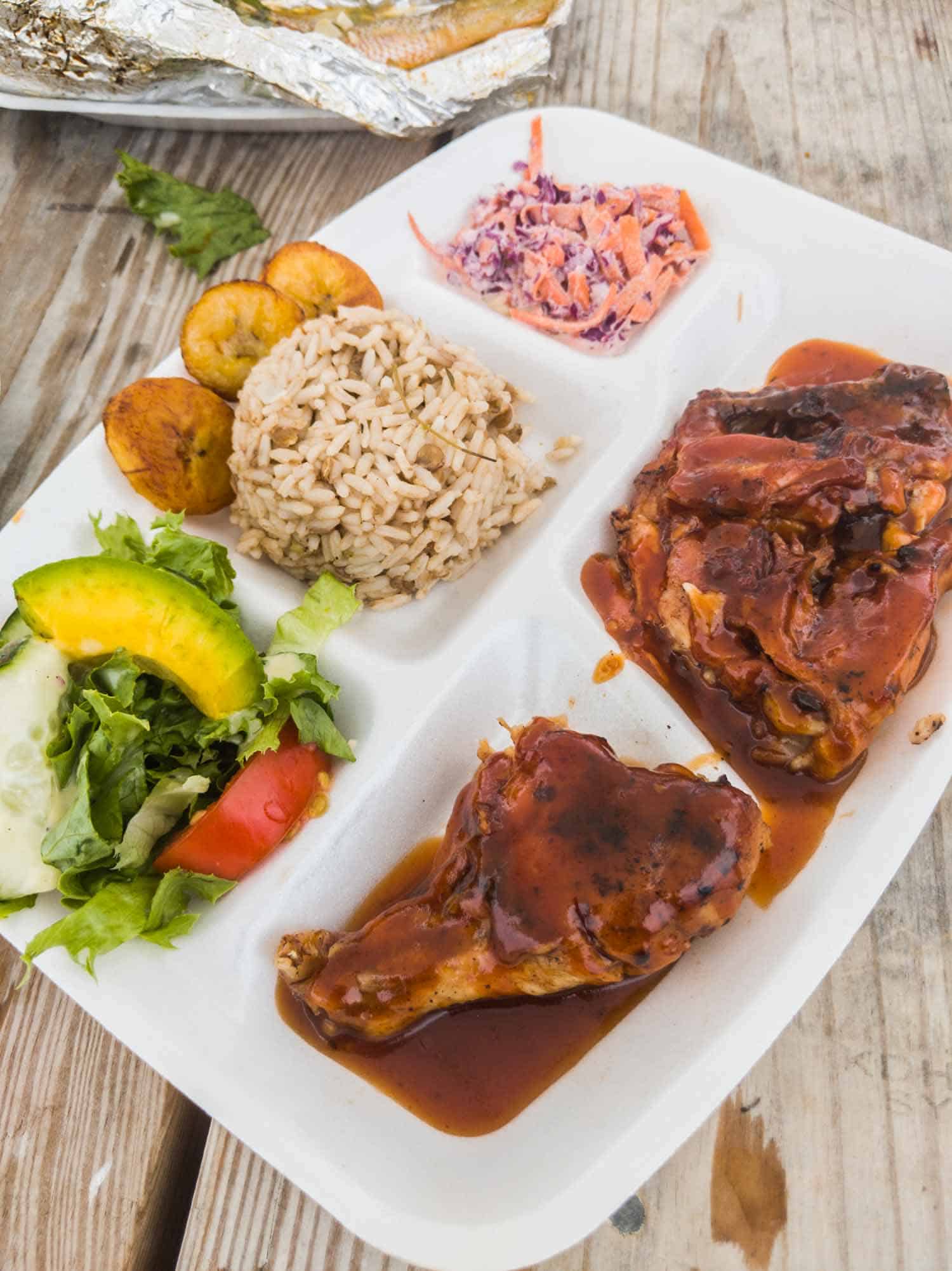
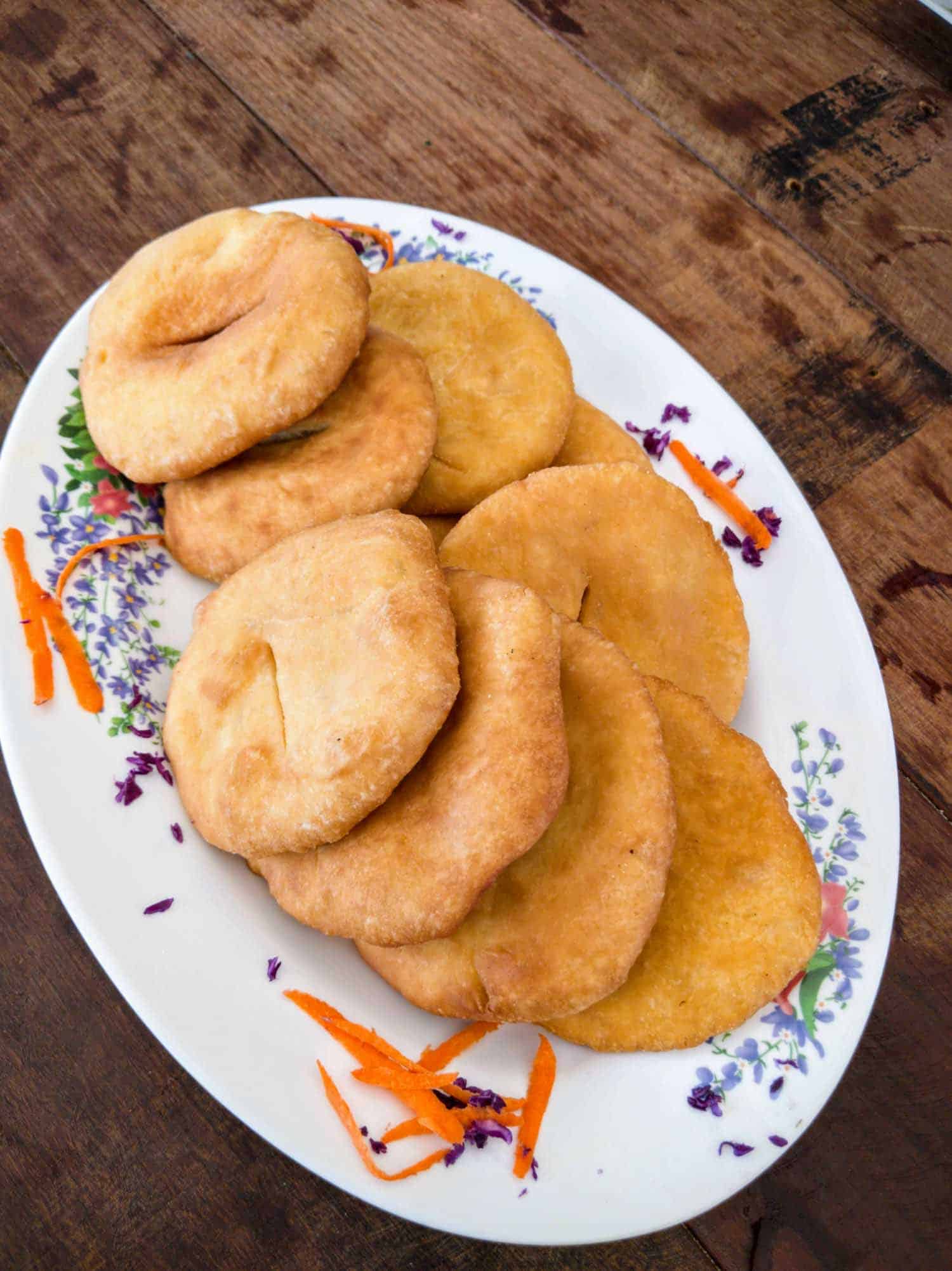


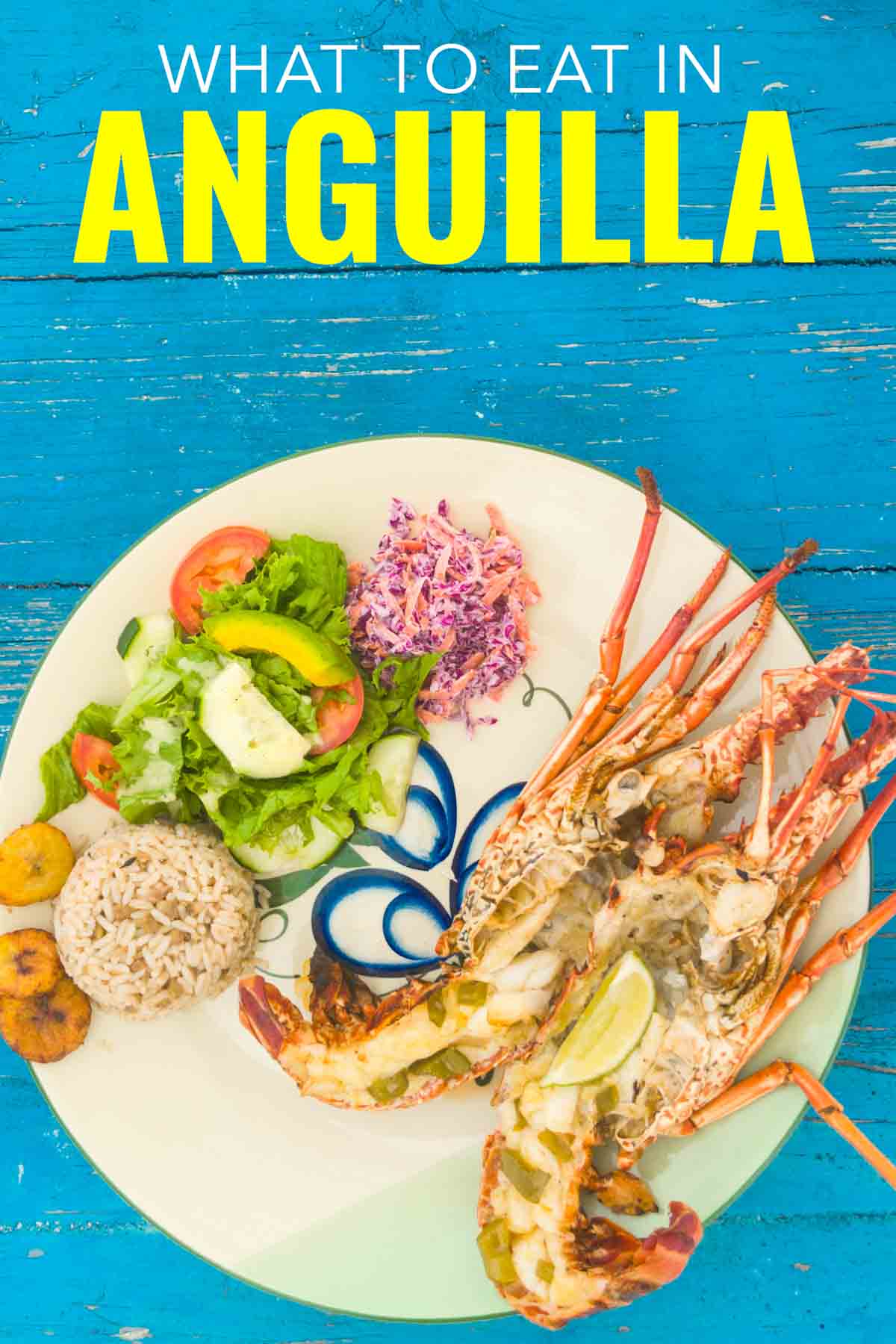
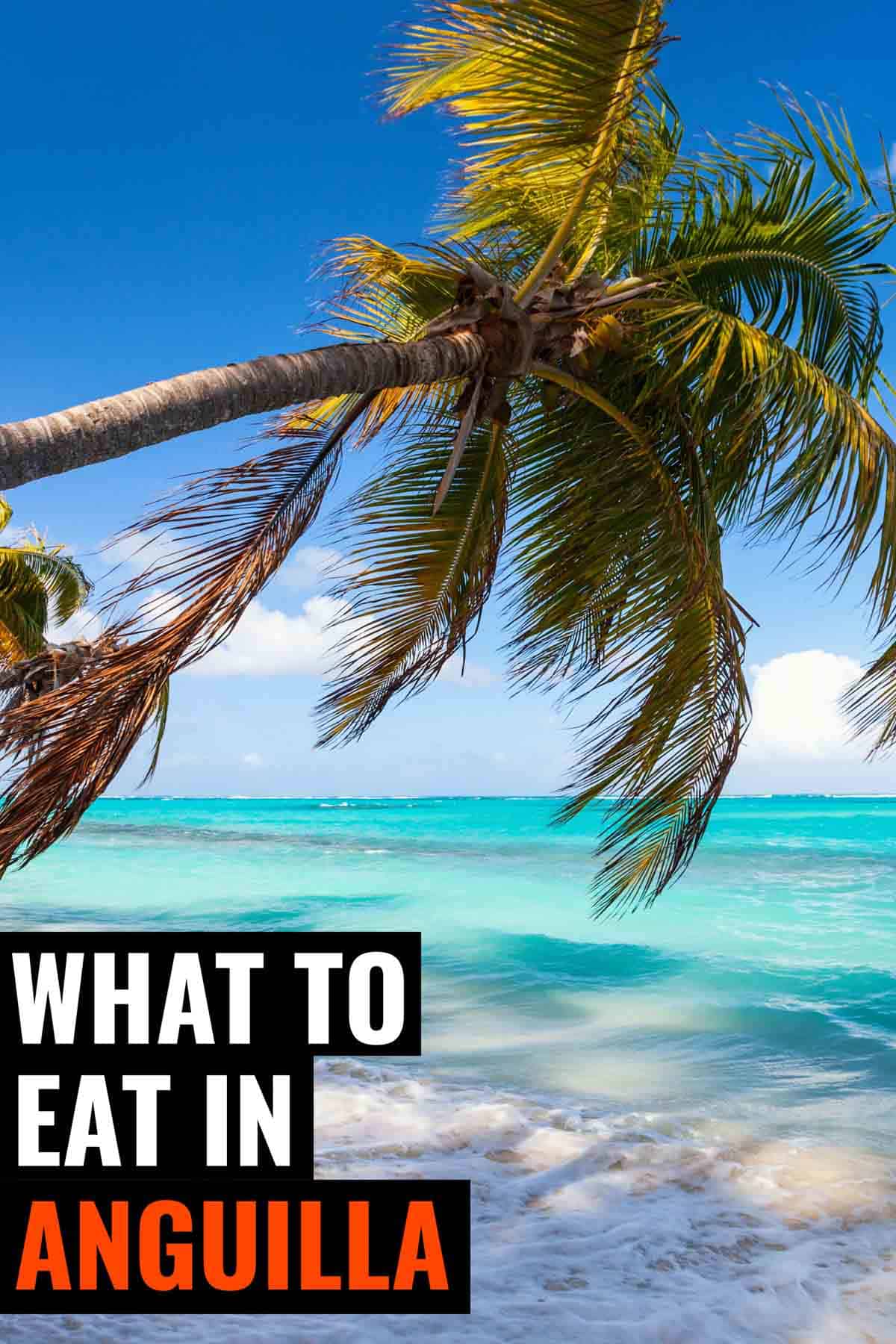
You convinced me to visit Anguilla! Looks like a great place for a holiday! Food seems absolutely delicious! If you are looking for new locations, I recommend Romania. The food here is excellent and you have so many places to discover.
Wow, travel is really not complete without trying their foods. Your photos are so nice, too. They all look refreshing and delicious. Thank you for sharing.
wow. its a very helpful!
You convinced me to visit Anguilla! Looks like a great place for a holiday! Food seems absolutely delicious!
Absolutely mouth watering. Would really love to visit Anguilla.
Thank you for sharing your his helpful tips about Anguilla. Your pictures of all foods are really tasty. I would love to go Anguilla, as soon as possible.
No travel is complete without the traditional food of the locals.
I wonder why Anguillians don’t raise pigs, since they do not need a lot of space. I imagine that chickens are also raised. Very interesting information, by the way. I am writing a fiction and chose Anguilla for the background. And that is how I got to your website: looking for more details about that wonderful island. Thank you for sharing the info and the pics!
Hi Emilia, Born and raised in Anguilla until I was eight years old. Responding to your question about pigs – Pigs were raised by almost all Anguillians and some still do, but not on the same level as years ago. If you go to Anguilla, you have to try the barbecue pork which is one of the very popular dishes available in the town. Pork is roasted on huge barbecue pits and this is a huge hit on Thurs- Sat evenings
Paula thanks so much for adding some context to this!
Paula, is there a book where I could get more information about Anguillan food? The gentleman who was going to put me in contact with a lady who owned a restaurant there won’t respond my emails. I actually created a fictional island modeled on Anguilla, since I know almost nothing about the place. I am looking also for maps of the island. (In south of Brazil they also roast a whole pig in an open pit, with very low fire. It cooks the whole day.
Fantastic.)